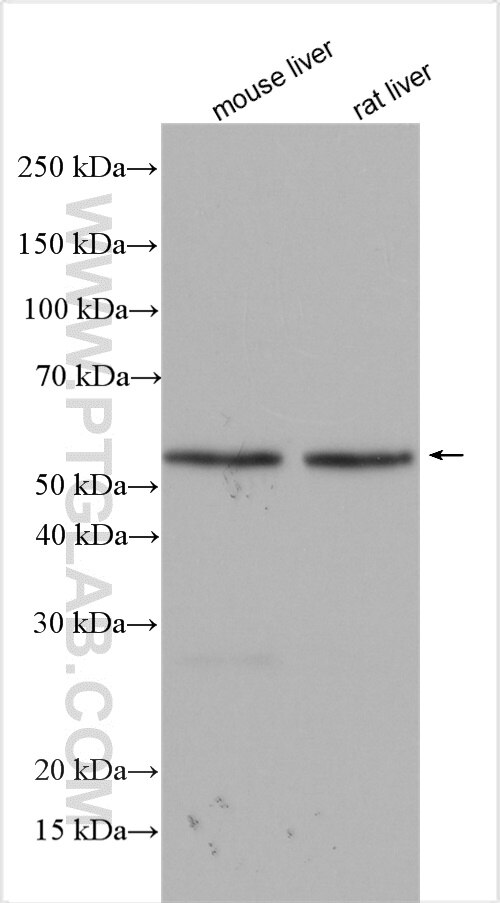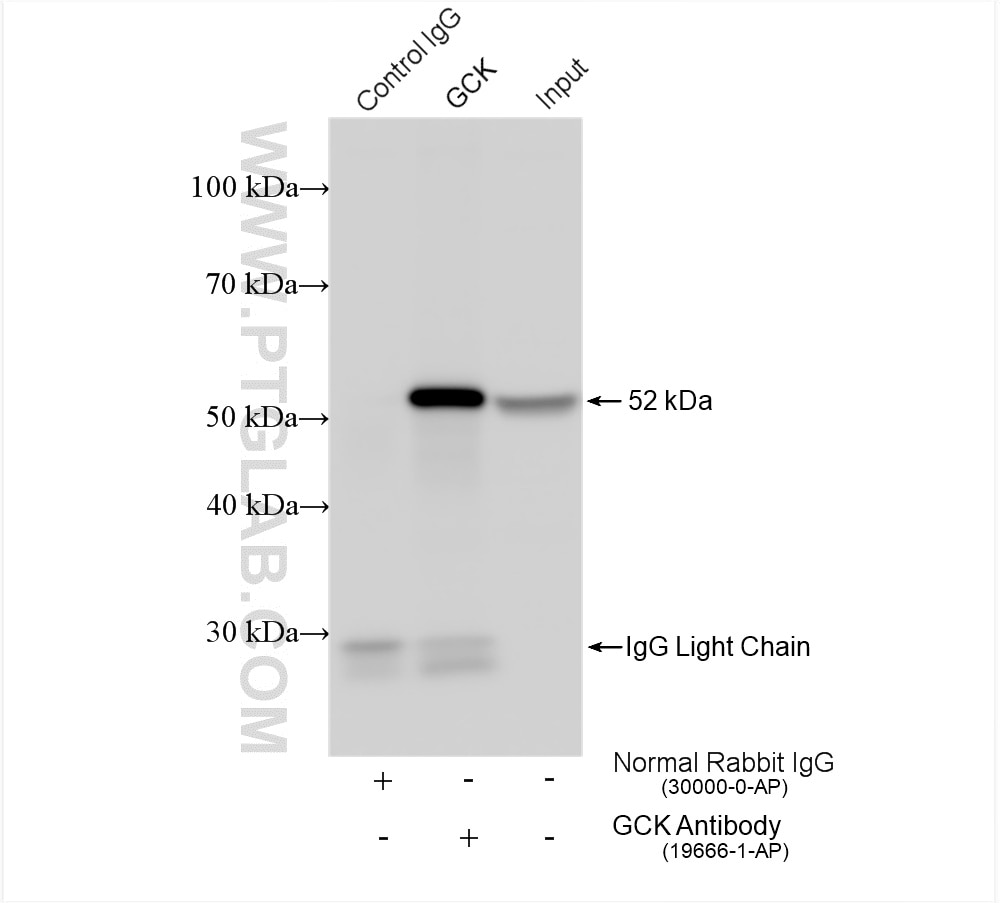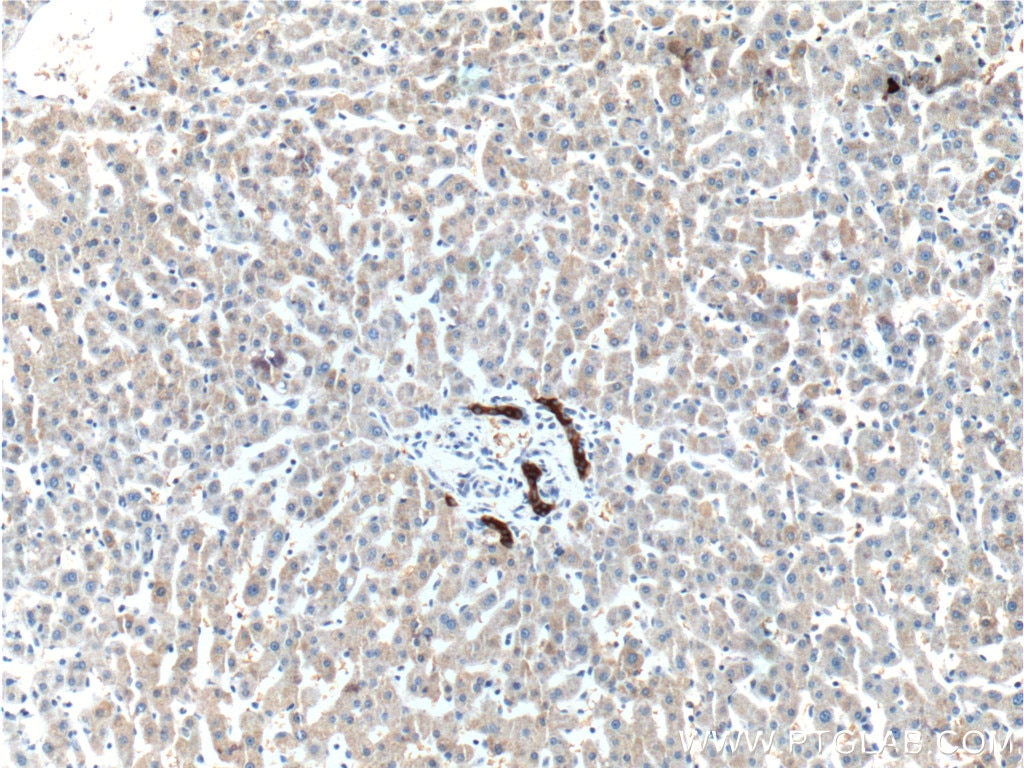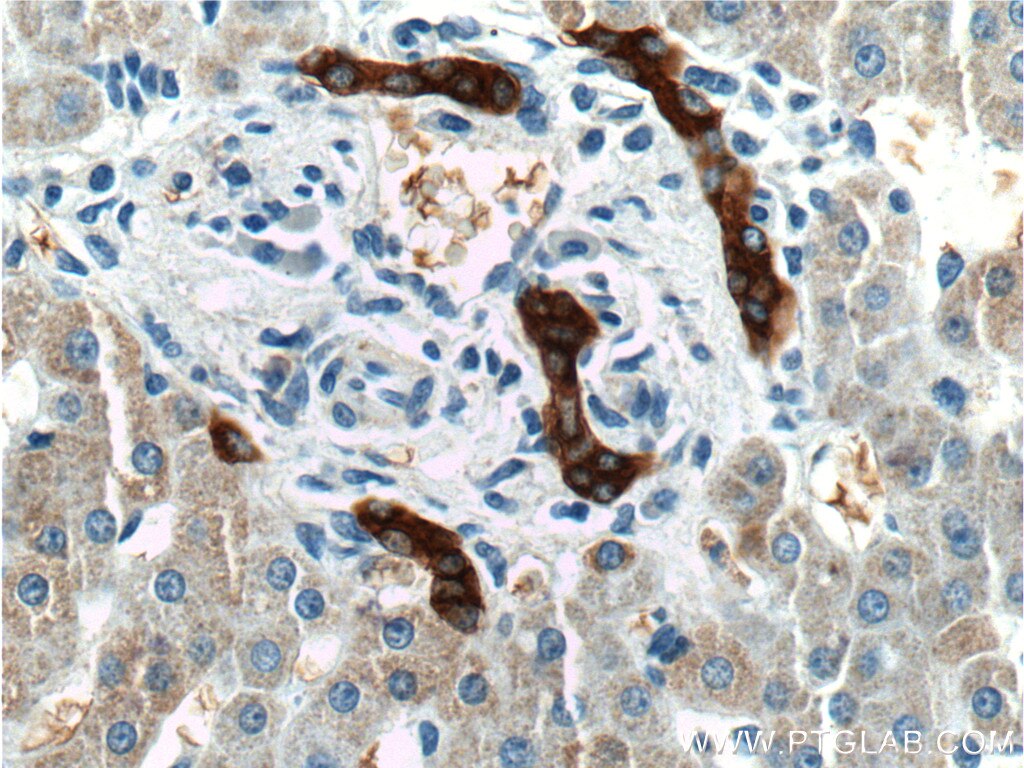- Featured Product
- KD/KO Validated
GCK Polyklonaler Antikörper
GCK Polyklonal Antikörper für WB, IHC, IP, ELISA
Wirt / Isotyp
Kaninchen / IgG
Getestete Reaktivität
human, Maus, Ratte
Anwendung
WB, IHC, IF, IP, ELISA
Konjugation
Unkonjugiert
Kat-Nr. : 19666-1-AP
Synonyme
Geprüfte Anwendungen
| Erfolgreiche Detektion in WB | Mauslebergewebe, Rattenlebergewebe |
| Erfolgreiche IP | Mauslebergewebe |
| Erfolgreiche Detektion in IHC | humanes Lebergewebe Hinweis: Antigendemaskierung mit TE-Puffer pH 9,0 empfohlen. (*) Wahlweise kann die Antigendemaskierung auch mit Citratpuffer pH 6,0 erfolgen. |
Empfohlene Verdünnung
| Anwendung | Verdünnung |
|---|---|
| Western Blot (WB) | WB : 1:1000-1:4000 |
| Immunpräzipitation (IP) | IP : 0.5-4.0 ug for 1.0-3.0 mg of total protein lysate |
| Immunhistochemie (IHC) | IHC : 1:100-1:400 |
| It is recommended that this reagent should be titrated in each testing system to obtain optimal results. | |
| Sample-dependent, check data in validation data gallery | |
Veröffentlichte Anwendungen
| KD/KO | See 1 publications below |
| WB | See 24 publications below |
| IHC | See 2 publications below |
| IF | See 4 publications below |
| FC | See 1 publications below |
Produktinformation
19666-1-AP bindet in WB, IHC, IF, IP, ELISA GCK und zeigt Reaktivität mit human, Maus, Ratten
| Getestete Reaktivität | human, Maus, Ratte |
| In Publikationen genannte Reaktivität | human, Maus, Ratte |
| Wirt / Isotyp | Kaninchen / IgG |
| Klonalität | Polyklonal |
| Typ | Antikörper |
| Immunogen | GCK fusion protein Ag8116 |
| Vollständiger Name | glucokinase (hexokinase 4) |
| Berechnetes Molekulargewicht | 52 kDa |
| Beobachtetes Molekulargewicht | 52 kDa |
| GenBank-Zugangsnummer | BC001890 |
| Gene symbol | GCK |
| Gene ID (NCBI) | 2645 |
| Konjugation | Unkonjugiert |
| Form | Liquid |
| Reinigungsmethode | Antigen-Affinitätsreinigung |
| Lagerungspuffer | PBS with 0.02% sodium azide and 50% glycerol |
| Lagerungsbedingungen | Bei -20°C lagern. Nach dem Versand ein Jahr lang stabil Aliquotieren ist bei -20oC Lagerung nicht notwendig. 20ul Größen enthalten 0,1% BSA. |
Hintergrundinformationen
Glucokinase (GCK) is a structurally and functionally unique member of hexokinase family. It is expressed only in mammalian liver and pancreatic islet beta cells. Because of its unique functional characteristics, the enzyme plays an important regulatory role in glucose metabolism.The rate of glucose metabolism in liver and pancreas is a function of the activity of the enzyme(PMID:1740341). Moreover, GCK has been found to have relationship with diabetes. Defects in GCK are the cause of maturity-onset diabetes of the young type 2 (MODY2) and familial hyperinsulinemic hypoglycemia type 3 (HHF3). It has 3 isoforms produced by alternative splicing with the same molecular mass of 52 kDa.
Protokolle
| PRODUKTSPEZIFISCHE PROTOKOLLE | |
|---|---|
| WB protocol for GCK antibody 19666-1-AP | Protokoll herunterladen |
| IHC protocol for GCK antibody 19666-1-AP | Protokoll herunterladenl |
| IP protocol for GCK antibody 19666-1-AP | Protokoll herunterladen |
| STANDARD-PROTOKOLLE | |
|---|---|
| Klicken Sie hier, um unsere Standardprotokolle anzuzeigen |
Publikationen
| Species | Application | Title |
|---|---|---|
Sci Transl Med Cyb5r3-based mechanism and reversal of secondary failure to sulfonylurea in diabetes
| ||
Phytomedicine Gentiopicroside ameliorates glucose and lipid metabolism in T2DM via targeting FGFR1 | ||
PLoS Biol Loss of hepatic aldolase B activates Akt and promotes hepatocellular carcinogenesis by destabilizing the Aldob/Akt/PP2A protein complex. | ||
iScience Mof plays distinct roles in hepatic lipid metabolism under healthy or non-alcoholic fatty liver conditions |





